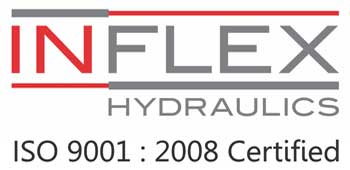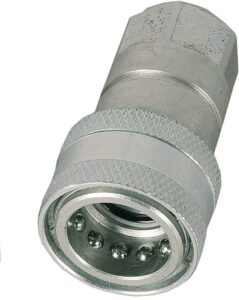Unwinding the Maze: Your Guide to Choosing the Perfect Quick Release Coupling for Any Need
Unwinding the Maze: Your Guide to Choosing the Perfect Quick Release Coupling for Any Need is a comprehensive resource designed to assist professionals in selecting the ideal quick release coupling for their specific requirements.
This guide provides valuable insights into the various types of quick release couplings, factors to consider when making a choice, and an in-depth understanding of materials, sizing, compatibility, and performance features.
Additionally, it offers practical tips for maintaining and troubleshooting quick release couplings to ensure optimal functionality and longevity.
Written in a professional tone, this guide aims to empower individuals in navigating the complexities of quick release couplings, enabling them to make informed decisions that align with their unique needs.
Key Takeaways
- There are different types of quick release couplings available, including hydraulic, pneumatic, camlock, dry disconnect, and push-to-connect couplings.
- When choosing a quick release coupling, factors to consider include pricing, benefits, compatibility, durability, and performance.
- Quick release couplings can be made from stainless steel, brass, aluminum, or plastic, and the material selection depends on the application and specific requirements.
- Sizing and compatibility considerations, as well as performance features such as pressure rating, flow rate, material compatibility, durability, and reliability, are important when selecting a quick release coupling.
Types of Quick Release Couplings
There are several different types of quick release couplings available for various industrial applications. These couplings are designed to provide a fast and secure connection between two fluid lines, allowing for easy disconnection and reconnection without the need for tools or excessive downtime.
One of the most common types of quick release couplings is the hydraulic quick disconnect coupling, which is widely used in applications such as construction equipment, agricultural machinery, and automotive systems. These couplings offer several advantages, including reduced assembly time, improved system performance, and increased safety.
Another type of quick release coupling is the pneumatic quick disconnect coupling, which is commonly used in compressed air systems. These couplings provide a reliable and efficient connection, allowing for quick and easy changes in equipment or tools.
Factors to Consider When Choosing a Quick Release Coupling
When selecting a quick release coupling, it is crucial to take into account various factors to ensure the perfect fit for your specific needs. One important factor to consider is the pricing of the quick release coupling. Different manufacturers may offer different pricing options, so it is important to compare prices and choose the one that fits your budget without compromising on quality.
Another factor to consider is the benefits of using quick release couplings. These couplings provide a convenient and efficient way to connect and disconnect fluid transfer systems. They save time and effort, as they eliminate the need for tools and reduce downtime during maintenance or repairs. Additionally, quick release couplings ensure a secure and leak-free connection, enhancing the safety and reliability of your system.
To help you make an informed decision, refer to the table below which outlines the factors to consider when choosing a quick release coupling:
| Factors to Consider | Description |
|---|---|
| Pricing | Compare pricing options from different manufacturers to find the best fit for your budget. |
| Benefits | Consider the convenience, efficiency, and safety benefits of using quick release couplings. |
| Compatibility | Ensure the coupling is compatible with your specific application and fluid transfer system. |
| Durability | Look for couplings made from high-quality materials that can withstand the demands of your application. |
Considering these factors will help you choose the perfect quick release coupling that meets your needs and provides long-lasting performance.
Understanding Quick Release Coupling Materials
To fully comprehend quick release coupling materials, it is essential to understand their composition and properties. The choice of material for a quick release coupling depends on its application and the specific requirements of the system. Different materials offer unique advantages that contribute to the overall performance and longevity of the coupling.
Here are some advantages of different quick release coupling materials:
- Stainless steel: Provides excellent resistance to corrosion and high temperatures, making it suitable for applications in harsh environments.
- Brass: Offers good resistance to corrosion and is commonly used in low-pressure applications.
- Aluminum: Lightweight and has good corrosion resistance, making it ideal for industries like aerospace and automotive.
- Plastic: Provides cost-effectiveness, chemical resistance, and electrical insulation properties, making it suitable for various applications.
Understanding these advantages can help in selecting the most suitable quick release coupling material for a specific application.
Sizing and Compatibility Considerations for Quick Release Couplings
Determining the appropriate size and ensuring compatibility are crucial factors in selecting the ideal quick release coupling for a specific application. The coupling should be chosen to match the diameter of the pipes or hoses to ensure a secure and leak-free connection. Additionally, compatibility should be assessed in terms of the medium being transferred, the pressure and temperature conditions, and any specific requirements of the application.
Quick release couplings offer numerous benefits, such as the ability to quickly and easily connect and disconnect fluid systems, reducing downtime and improving efficiency.
Performance Features to Look for in Quick Release Couplings
What key performance features should one look for in quick release couplings?
When choosing a quick release coupling for various quick release coupling applications, it is important to consider the following performance features:
- Pressure Rating: Quick release couplings should be able to handle the maximum pressure of the system they are being used in. Ensure that the coupling has a pressure rating suitable for the specific application.
- Flow Rate: The flow rate of the quick release coupling should match the requirements of the system. Consider the maximum flow rate needed and choose a coupling that can handle that level of flow.
- Material Compatibility: Quick release couplings should be made from materials that are compatible with the fluids or gases being transferred. Ensure that the coupling can handle the specific media without any issues.
- Durability and Reliability: Look for quick release couplings that are durable and reliable, as they will be subjected to frequent connection and disconnection. Choose couplings that are designed for high performance and can withstand the demands of the application.
Considering these performance features will help ensure that the chosen quick release couplings provide the desired benefits of quick release couplings, such as ease of use, time savings, and increased productivity.
Tips for Maintaining and Troubleshooting Quick Release Couplings
The maintenance and troubleshooting of quick release couplings requires careful attention to detail and adherence to recommended practices. To ensure the optimal performance and longevity of these couplings, regular maintenance is essential.
Here are some maintaining tips to consider. First, inspect the couplings regularly for signs of wear or damage, such as leaks or loose connections.
Secondly, clean the couplings regularly to remove any dirt or debris that may affect their performance. Additionally, lubricate the couplings as recommended by the manufacturer to reduce friction and ensure smooth operation.
When it comes to troubleshooting techniques, it is important to identify the root cause of any issues. This may involve checking for loose fittings, replacing worn-out seals or O-rings, or adjusting the pressure settings.
Frequently Asked Questions
How Much Weight Can a Quick Release Coupling Handle?
The maximum weight capacity of a quick release coupling depends on various factors, including the design and materials used. It is crucial to consider factors such as load distribution, operating conditions, and safety standards when determining the weight capacity of a quick release coupling.
Can Quick Release Couplings Be Used With Different Types of Fluids, Such as Gas or Chemicals?
Quick release couplings can be used with different types of fluids, such as gas or chemicals. However, compatibility concerns regarding fluid compatibility and material considerations for quick release couplings should be taken into account.
Are Quick Release Couplings Suitable for High-Pressure Applications?
Quick release couplings are suitable for high-pressure applications due to their efficient and secure connection. Compared to traditional couplings, they offer advantages such as quick and easy installation, minimal leakage, and improved safety in demanding environments.
Can Quick Release Couplings Be Used in Extreme Temperatures?
Quick release couplings can be used in extreme temperatures depending on the material chosen. Options such as stainless steel or brass are suitable for high-temperature applications. Using quick release couplings in extreme temperatures offers benefits such as efficient and reliable connections.
How Do I Select the Right Quick Release Coupling for My Specific Industry or Application?
When selecting the right quick release coupling for a specific industry or application, there are several factors to consider. Avoiding common mistakes is crucial. This guide provides technical and precise information to assist in making an informed decision.

